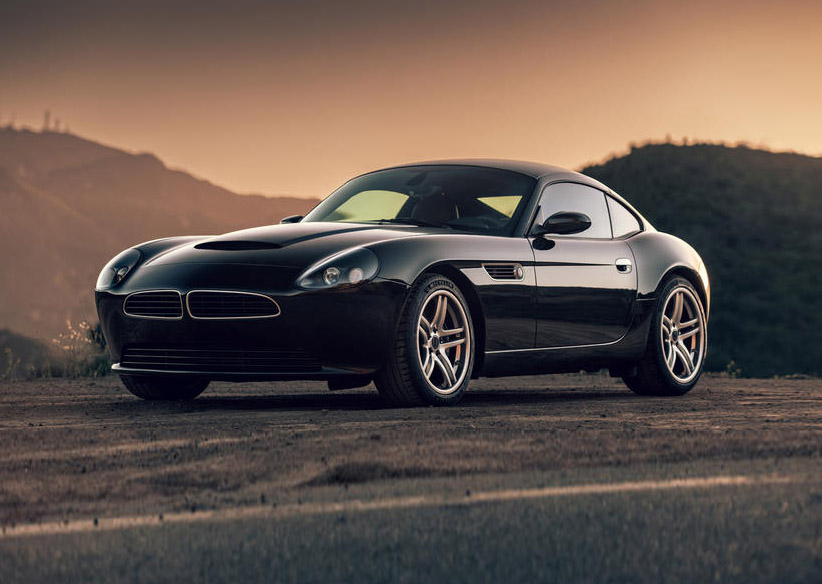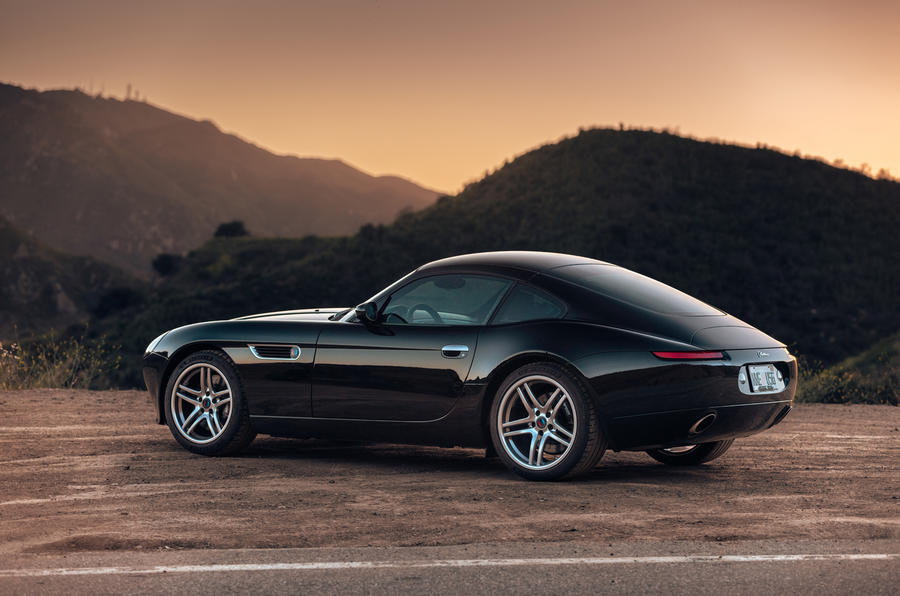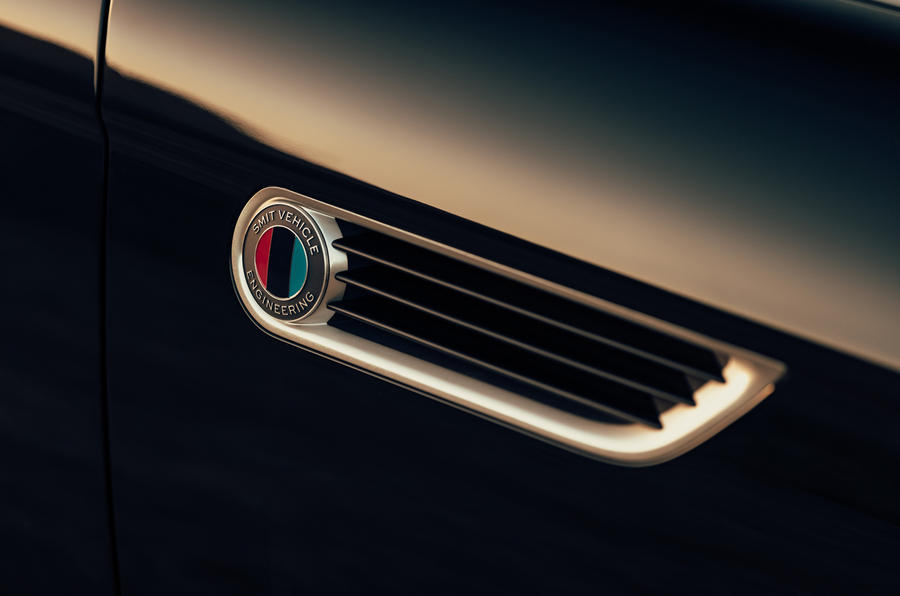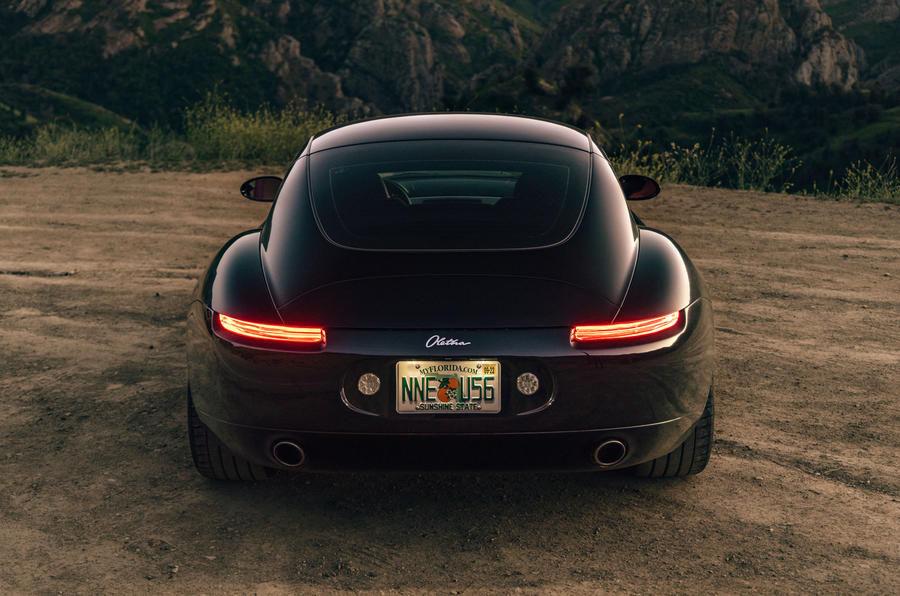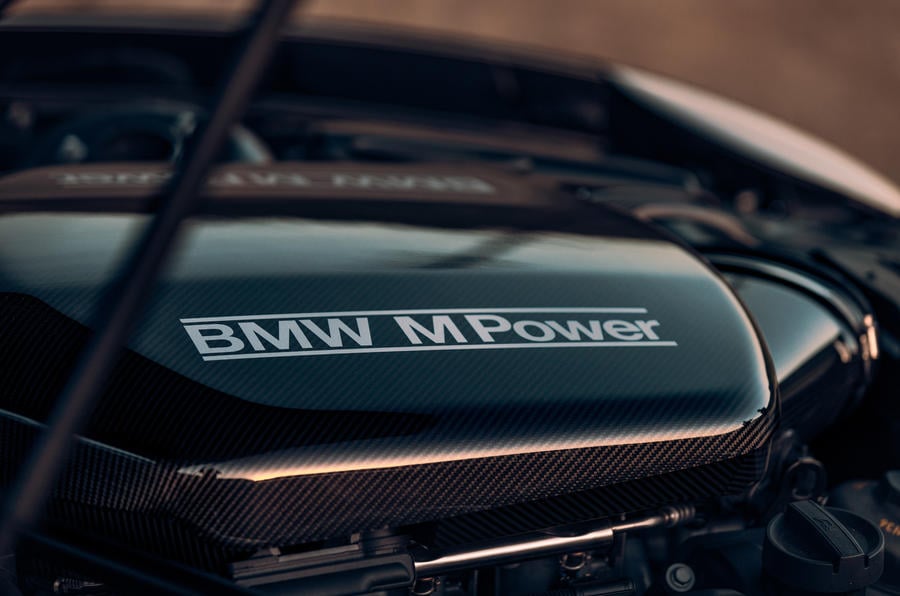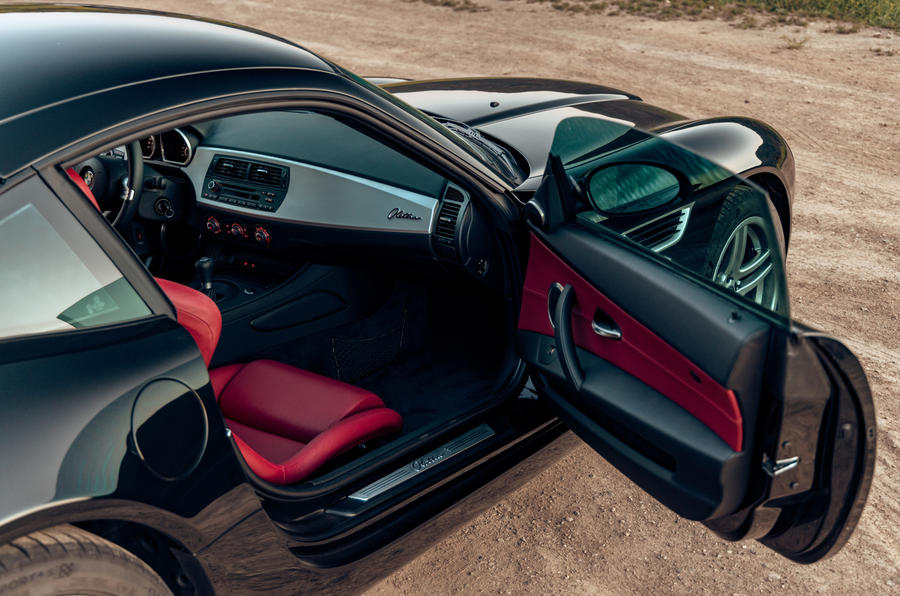If the car doesn’t exist, then create it – so believes the world’s growing legion of restomodders.
It’s early afternoon on a sunny spring weekday, and the Smit brothers are waiting for me beside the Pacific Coast Highway. It’s one of the world’s most famous road trip destinations, and I’m prepared to argue they’ve made one of the more glamorous cars to have ever rolled along it.
BMW never made a Z8 coupe, which, if you’re a fan of coupes (as I am and I think the Smits are) is perhaps a shame. This car looks like one. It isn’t one, but it looks like one.
Kaess and Willem Smit are both engineers and between them have spent time with high-tech manufacturers and tuners, working in aerospace and for Tesla and Porsche 911 modifier Singer. They clearly work well together and are unashamed BMW fans. They’ve also noticed that the world is currently quite keen on restored/modified cars.
Joining all those dots of interest, and adding in the fact that they’re still young and flexible enough to do something about it, here we are with the Smit Vehicle Engineering Oletha prototype.
The reason it’s not a Z8 coupé is because it’s actually a BMW Z4. We will come back to that. First, though, neither of the pair is a stylist, and nor am I, and I don’t write much about design too much, because although there’s an element of objectivity to proportions, there are pictures, so you can make up your own mind. But if you will allow me, this looks like the beautiful Z8 coupé we never had.
It’s 250mm longer at the rear than the Z4 and around 50mm narrower, which still leaves it a fairly compact 4350mm long and 1850mm wide. And the Z4 works as the basis for this project because the proportions suit the carbonfibre body perfectly, and it means Smit doesn’t have to start cutting up an ultra-rare Z8 for the fun of it. Besides, the Z4 is a notably strong mechanical platform.
It’s the E86-generation Z4 coupé of 2006 to 2008, and because that was designed as a roadster first and a coupé second, it has a notably stiff shell – much more so than the Z8’s, at 32,000Nm/deg of torsional rigidity.
The Smits didn’t want to change the structural monocoque, because if they chopped big holes in a car that was designed to be stiff and crash well in the first instance, they might not have actually improved things.
They have swapped mechanicals, though, because they want to make a few Olethas and, even given today’s skyrocketing used car prices, they’re not sure a car entirely mechanically similar to a BMW Z4M would quite do the job, regardless of whether it’s fitted with one of the world’s best-looking bodies. A six-cylinder car would be cheaper, though, they will admit.
Especially given what they’ve done with the engine. The Oletha runs the S65 V8, sourced from the E92 BMW M3 (2007 to 2013). With a load of new internals, it now runs to 4.4 litres, up from 4.0, and with a new ECU, too, is effectively like that era’s BMW M3 GTS engine, making 330kW and having an 8500rpm redline.
It drives the rear wheels through a six-speed manual gearbox and a mechanical limited-slip differential. It’s a bit of a squeeze in the Z4’s engine bay, though, so much so that a bespoke exhaust manifold is intricately threaded around the steering column, which itself drives with a smaller power-steering pump from a much later BMW M5. They’ve used BMW parts wherever possible. At the moment, the Oletha weighs 1450kg fully fuelled, but it should be lighter with production parts.
Where things haven’t been so radically altered – and this may or may not yet be a problem – is inside. The Smits’ reasoning is sensible. BMW builds premium things by the tens of thousand and therefore will always achieve a better fit and finish than a company rebuilding them by the tens of, er, one. They could fit, Willem takes as an example, a simple metal gearknob, but it would be hot in summer, it would be cold in winter and sweaty hands would slip on it, so it’s much better left as the leather one that BMW fitted.
There are a few material tweaks here and there, and new seats, but inside, Oletha feels steadily Z4-ish. I didn’t mind that – it’s from the era before fiddly touchscreens, after all – but some customers might.
This is a prototype, but the Smits are looking at a price of $450,000 (AUD$647,000) for an Oletha with the V8. If they stuck with the straight six, it would still be $350,000 (AUD$503,000).
The brothers are still tweaking the dynamics, yet to settle on a set of suspension bushings that don’t allow kickback through the steering and decide on settings for the adjustable KW suspension, currently set overfirmly. Plus they think the steering is too light. But they tell me they would like to set up the Oletha as a road car primarily, rather than as a track car, and that we should go for an afternoon drive on some good roads to find out how it feels. So we do.
You sit low in the Oletha. The driving position initially feels slightly offset, but after a minute I forget it. The steering wheel adjusts broadly, the gearlever sits close and the pedals have their standard, weighty BMW feel. The engine starts to a woofle, the bonnet stretches out ahead and, as in a Z4, I feel like I’m sitting near the back axle – with shades of muscle car, grand tourer, old-school sports car.
Like a used car seller who gives you a list of things that are wrong with the car, I think it shows a lot of confidence when engineers tell you which jobs are still left undone.
We tour briefly up the coastal road and I see what the Smits mean about the ride (a bit firm), steering weight (a bit light) and kickback (a bit kicky). But then we turn onto what Americans call canyon roads, which you and I would know as some of the twistiest, emptiest, best hillclimb roads you could come across, and it all gets better. Much, much better.
At the moment, the highlight of the experience (aside from looking at it) is the engine, which has a genuine triality of character. At low revs and throttle inputs, it takes on a gentle cruiser-ish throb, perhaps a bit boomy; but it gets harder and muscle car-like on big throttle inputs through middling revs and responds brilliantly crisply to stabbed rev-matching downshifts; and then there’s a final extra edge to it at high revs, as muscle car overtones get race car undertones. It’s remarkable.
On switchback roads, inevitably the lightness of steering becomes less of a bother, too – in fact, for multiple combinations of 90deg-plus corners, it fits right in.
I don’t notice a firmness of ride in this sort of driving, either, merely a nice balance – not too nose-heavy, even though I feel like I’m sitting near the back axle, and with a line that’s happy to be gently trimmed with the throttle on corner exit – within reason. It would be easy to get carried away with what is a thoroughly special driver’s car, but I probably shouldn’t try to start sliding somebody else’s carbonfibre-bodied prototype around.
The carbonfibre, by the way, comes from southern England. The wheels are British, too. Pulling the project together with the right quality and cost seems far more time-consuming than making the car good to drive. (A few days after my drive, the Smits are preparing to relocate from San Diego, California, to Nashville, Tennessee, because it’s easier to run a fledgling car company from there.)
As a result of the effort, the Smits aren’t about to do what some firms do and threaten to turn customers away. They would like to build “a few dozen”, but if you want one, they will make you one. I strongly suspect they will have sorted the minutiae of the steering and dynamics by that point.
But even if they haven’t, there would be worse things to do than just look at it.
Matt Prior




